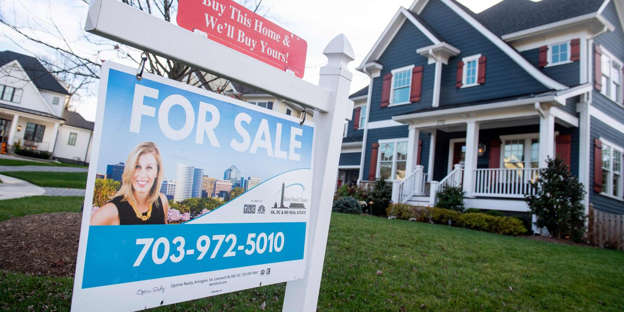Sales of new homes in the U.S. fell in June to the lowest level since the first month of the U.S. coronavirus pandemic in early 2020, as high prices and a limited selection frustrated scores of would-be buyers.
New-home sales dropped 6.6% to an annual rate of 676,000, the government said Monday. That’s how many homes would be sold in a year if the same number were bought in each month as they were in June.
The decline in sales was much larger than Wall Street had expected. Economists polled by the Wall Street Journal forecast an annual sales rate of 795,000.
New-home sales had leaped in January to the highest level in almost 15 years — an almost 1 million annual rate — as buyers took advantage of record-low mortgages rates.
Yet sales have fallen since then because of high costs and a shortage of new properties for sale.
The big picture: Plenty of people want to buy homes, but high prices and a limited selection are the biggest obstacles. The average cost of a new home is about 12% higher compared with a year earlier and near a record peak.
High home prices are the result of strong customer demand and more expensive building materials such as lumber. Builders also can’t find enough carpenters, bricklayers and other skilled craftsmen to do the work.
In some case, builders are even waiting to list homes because they don’t want to get stuck eating the higher cost of materials. By waiting they can pass the costs onto customers.
These problems are expected to act as a drag on the housing market for months to come. Not only that, but also it’s preventing many homeowners from selling their current homes because they might not have another home to move into.
Key details: Sales rose in the Midwest, but they fell everywhere else.
The median sales price of new homes dropped to $361,000 in June from an all-time high of $380,700 in May, but they are still higher than they were one year ago.
The inventory of new homes for sale rose to 6.3 months from 5.5 months. That’s how long it would take to sell all the houses listed for sale at the current pace of home buying.
The annual rate of sales in May was also revised down to a 724,000 from an initial 800,000.
What they are saying? “The jump in home prices has worked to sideline potential home buyers,” said economist Katherine Judge at CIBC World Markets. “This print is another piece of evidence confirming that residential investment will likely have become a drag on growth in the second quarter, following a strong performance in the previous few quarters.”
Market reaction: The Dow Jones Industrial Average DJIA, +0.24% and S&P 500 index SPX, +0.24% fell in Monday trades.
Major home-builder stocks such as D.R. Horton DHI, -1.10%, Lennar Corp. LEN, -1.51% and PulteGroup PHM, -1.31% also fell, although all three stocks were near multiyear highs.






One Comment
graliontorile
Enjoyed studying this, very good stuff, thanks.